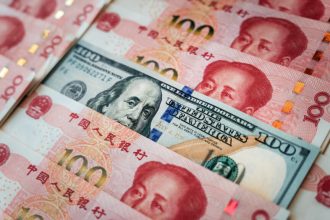Vaishnavi Srinivasagopalan, an experienced IT professional from India, has her sights set on job opportunities in China after transitioning from working in both India and the U.S. Her aspirations align with Beijing’s recent launch of the K-visa program, which targets skilled science and technology workers and could potentially open doors for her in the Chinese job market.
Launched last month, the K-visa is part of China’s concerted effort to bolster its competitive edge against the United States in attracting global talent and advancing technology. This initiative comes amid uncertainties surrounding the U.S. H-1B visa program, particularly due to stricter immigration policies enacted under former President Donald Trump.
“(The) K-visa for China (is) an equivalent to the H-1B for the U.S.,” Srinivasagopalan noted, expressing her fascination with the cultural and professional landscape in China. Her interest was further piqued by her father’s experience working at a Chinese university. “It is a good option for people like me to work abroad.”
Unlike its predecessor schemes, the K-visa features more flexible application criteria, allowing individuals to apply without a pre-existing job offer. This represents a shift from the R-visa, which caters to foreign professionals but maintained stricter entry requirements.
The tightening of immigration rules in the U.S. has compounded challenges for foreign students and skilled professionals. Notably, the cost for obtaining an H-1B visa has surged to $100,000 for new applicants, prompting many to explore opportunities elsewhere. Bikash Kali Das, an Indian master’s student at Sichuan University, remarked, “Students studying in the U.S. hoped for an (H-1B) visa, but currently this is an issue.”
China is seizing the moment, positioning itself as a competitive alternative for tech talent. The Communist Party is prioritizing leadership in advanced technologies and has allocated significant government subsidies to research and development initiatives across sectors like artificial intelligence, semiconductors, and robotics.
Barbara Kelemen, associate director and head of Asia at security intelligence firm Dragonfly, observed, “Beijing perceives the tightening of immigration policies in the U.S. as an opportunity to position itself globally as welcoming foreign talent and investment more broadly.”
Despite high unemployment rates among young Chinese graduates—especially noticeable among individuals aged 16 to 24, where the jobless rate stands at nearly 18%—the need for skilled workers is evident. The Chinese government aims to address the skills gap that has expanded over years of emigration, wherein many talented individuals opted to remain in developed countries after completing their education.
The phenomenon of brain drain persists, with many Chinese families still viewing Western education as highly desirable. Alfred Wu, an associate professor at the National University of Singapore, noted the ongoing trend: “Many parents are eager to send their children abroad to study.”
However, recent years have seen a shift, with an increasing number of STEM professionals, particularly those specializing in AI, making their way back to China, including Chinese-Americans. Among them are Fei Su, a chip architect from Intel, and Ming Zhou, a leading engineer from the U.S.-based software firm Altair, both of whom accepted teaching positions in China this year.
Interest in the K-visa isn’t limited to individuals from India; skilled workers from Southeast Asia are also engaging with this new opportunity. Edward Hu, an immigration director at the consultancy Newland Chase based in Shanghai, mentioned, “Many skilled workers in India and Southeast Asia have already expressed interest about the K-visa.”
Despite the ambitious endeavor to attract foreign talent, questions remain regarding the already fierce competition within the job market. Zhou Xin-ying, a 24-year-old postgraduate student in behavioral science at Zhejiang University, voiced her concerns: “The current job market is already under fierce competition.” As China continues to expand its appeal to international professionals, the balance between domestic job seekers and new foreign talents will be a critical dynamic to observe moving forward.








